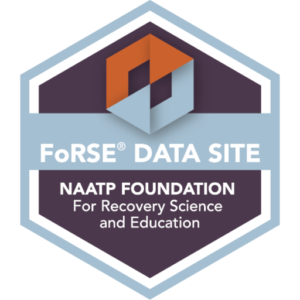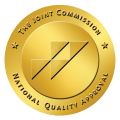Substance-induced mood disorder is a mental health condition triggered by the use of drugs or alcohol. Unlike traditional mood disorders, which arise independently of substance use, this condition is directly linked to the effects of substances on the brain and nervous system. Individuals may experience intense emotional disturbances such as depression, mania, or mixed episodes after using or withdrawing from certain substances. These mood changes can be severe, persistent, and disruptive to daily life.
This condition is recognized in the Diagnostic and Statistical Manual of Mental Disorders, Fifth Edition (DSM-5), under the category of substance/medication-induced depressive and bipolar disorders. At its core, substance-induced mood disorder reveals how deeply substance use can alter brain chemistry and emotional regulation. For many, the path to healing involves not only abstinence from substances but also comprehensive mental health treatment to address the underlying emotional turmoil and promote long-term recovery.
How Substance Use Affects Mood and Behavior
 Mood is heavily influenced by brain chemicals like serotonin, dopamine, and norepinephrine. When a person uses mood-altering substances such as alcohol, opioids, or stimulants, these chemicals can become dysregulated. Some substances overstimulate the release of neurotransmitters, while others suppress them. Over time, this biochemical chaos can lead to symptoms of depression, anxiety, or mania.
Mood is heavily influenced by brain chemicals like serotonin, dopamine, and norepinephrine. When a person uses mood-altering substances such as alcohol, opioids, or stimulants, these chemicals can become dysregulated. Some substances overstimulate the release of neurotransmitters, while others suppress them. Over time, this biochemical chaos can lead to symptoms of depression, anxiety, or mania.
For example, stimulants like cocaine and methamphetamine increase dopamine levels rapidly, creating euphoria followed by a harsh crash. During withdrawal, individuals often experience deep depression or agitation. On the other hand, long-term alcohol use is linked with reduced serotonin levels, which can lead to persistent depressive symptoms.
Behaviorally, these mood swings can cause irritability, isolation, aggression, impulsivity, and even suicidal thoughts. The longer substance use continues, the more ingrained these behavioral patterns may become, creating a dangerous cycle that can be hard to break without professional support.
Common Substances Linked to Mood Disturbances
Many substances can contribute to substance-induced mood disorder.
The most common include:
Heavy drinking can cause depression and anxiety, especially during withdrawal periods. Chronic use also increases the risk of developing a depressive episode.
These stimulants often trigger manic-like symptoms, including agitation, paranoia, and risky behavior. After the high wears off, users may crash into a deep depression.
Heroin, prescription painkillers, and fentanyl can numb emotions during use but often cause mood swings, depression, and irritability during withdrawal.
Although commonly perceived as a relaxing drug, high THC doses can lead to paranoia, anxiety, and depressive episodes in some individuals.
These anti-anxiety medications can impair emotional regulation, particularly when misused or used in combination with other drugs. Withdrawal can also cause severe mood disturbances.
Substances like LSD, PCP, or bath salts can produce mood swings, hallucinations, and psychosis, often lasting beyond the immediate high.
It is important to note that both legal and illegal substances can trigger these effects, including prescription medications when taken incorrectly or abused.
Symptoms of Substance-Induced Mood Disorder
The symptoms of substance-induced mood disorder can vary depending on the substance used, the individual’s mental health history, and the frequency and duration of use. However, common symptoms include:
- Persistent feelings of sadness or hopelessness
- Loss of interest in activities once enjoyed
- Fatigue or low energy
- Difficulty concentrating or making decisions
- Insomnia or hypersomnia
- Appetite changes leading to weight loss or gain
- Excessive guilt or feelings of worthlessness
- Agitation, irritability, or restlessness
- Suicidal thoughts or behaviors
- Euphoric mood followed by a crash
- Rapid speech, impulsivity, and racing thoughts (in manic-type cases)
It’s important to understand that these symptoms often emerge during active substance use or shortly after stopping. In many cases, individuals do not recognize that their mood changes are related to their substance use, making diagnosis and treatment more complex.
Substance-Induced vs. Primary Mood Disorders: What’s the Difference?
Primary Mood Disorders (such as major depressive disorder or bipolar disorder) are mental health conditions that occur independently of substance use. These disorders may precede substance use and often have genetic or biological components.
Substance-Induced Mood Disorders, on the other hand, develop as a direct result of using a substance or during withdrawal. Once the substance leaves the body, symptoms often lessen or resolve entirely, although not always.
Clinicians must conduct a thorough assessment that includes:
- A detailed substance use history
- Timeline of symptom onset in relation to substance use
- Psychiatric evaluation and mental health history
- Observation of symptom persistence during sobriety
Who Is at Risk for Developing This Disorder?
Anyone who uses mood-altering substances is potentially at risk for developing substance-induced mood disorder, but certain factors increase vulnerability:
- High Frequency and Quantity of Use: The more often and heavily a person uses, the greater the disruption to brain chemistry.
- Preexisting Mental Health Conditions: Individuals with undiagnosed or untreated depression, anxiety, or bipolar disorder may be more susceptible.
- Family History of Mood Disorders or Addiction: Genetic predisposition plays a significant role.
- Stressful Life Events: Trauma, chronic stress, or grief can lead to self-medication, increasing the risk of developing mood-related symptoms.
- Polysubstance Use: Using multiple substances increases the likelihood of unpredictable mood changes and more severe emotional instability.
- Withdrawal and Detox Challenges: Improper detox or abrupt cessation can shock the nervous system, leading to intense mood symptoms.
How Is Substance-Induced Mood Disorder Diagnosed?
Diagnosing substance-induced mood disorder requires a careful, multi-step approach. Clinicians must differentiate between temporary mood symptoms due to intoxication or withdrawal and those that indicate a deeper issue.
The process typically involves:
- Medical and Psychiatric Evaluation: Comprehensive interviews help determine medical history, mental health status, and patterns of substance use.
- Laboratory Tests: Drug screenings and blood tests help identify active substances in the system and rule out other health issues.
- DSM-5 Criteria: Clinicians use standardized guidelines to identify whether mood symptoms are directly linked to substance use.
- Observation Over Time: Sometimes, individuals must remain sober for several weeks or months before a definitive diagnosis can be made.
Early detection is essential because untreated symptoms can spiral into self-harm, overdose, or prolonged psychiatric issues.
Treatment Options and Recovery Approaches
At Longleaf Recovery, treatment for substance-induced mood disorder is holistic, personalized, and evidence-based. Effective recovery involves both medical and therapeutic interventions that address the root cause and its emotional aftermath.
Detox helps the body safely eliminate harmful substances while managing withdrawal symptoms.
Mental health professionals may use medication, counseling, or both to stabilize mood and prevent immediate harm.
Cognitive Behavioral Therapy (CBT), Dialectical Behavior Therapy (DBT), and trauma-informed care help clients process emotions and build healthier coping mechanisms.
Peer support groups encourage connection, reduce isolation, and offer real-life inspiration for recovery.
Involving loved ones in therapy can improve communication, foster healing, and create a support system at home.
Yoga, meditation, nutrition counseling, and recreational activities promote emotional balance and physical well-being.
Every person’s journey is different, and the right combination of therapies depends on individual needs and co-occurring disorders.
The Role of Dual Diagnosis Treatment
Dual diagnosis treatment is essential for individuals experiencing both substance-induced mood disorder and another mental health condition. These co-occurring disorders are often intertwined, making isolated treatment less effective.
Longleaf Recovery specializes in dual diagnosis care, ensuring that clients receive:
- Integrated mental health and addiction services
- Coordinated care from psychiatrists, therapists, and addiction specialists
- Treatment plans that adapt to evolving emotional and psychological needs
- Ongoing assessment to adjust medications or therapeutic strategies
Preventing Relapse and Managing Long-Term Mental Health
Recovery doesn’t end with detox or inpatient care. Preventing relapse and managing mental health long-term requires commitment and ongoing support.
Key strategies include:
- Aftercare Planning: Outpatient therapy, 12-step programs, and sober living options support continued growth.
- Medication Management: For some, mood stabilizers or antidepressants may be necessary to maintain emotional balance.
- Regular Therapy: Continued counseling helps individuals stay mindful of triggers and develop resilience.
- Healthy Lifestyle Habits: Nutrition, exercise, and sleep hygiene can dramatically influence mental health.
- Support Networks: Family, friends, and recovery communities play a crucial role in providing encouragement and accountability.
When to Seek Help for Substance-Induced Mood Disorder
If you or a loved one is struggling with mood changes that coincide with drug or alcohol use, it may be time to seek professional help. Warning signs include:
- Persistent depression or anxiety that doesn’t improve with time
- Severe mood swings or aggressive behavior
- Feelings of hopelessness, worthlessness, or suicidal thoughts
- Inability to control substance use despite emotional consequences
- A history of relapse linked to mental health struggles
At Longleaf Recovery, our compassionate team is here to guide you or your loved one toward healing. Our integrative approach ensures both substance use and emotional well-being are addressed together, helping you reclaim stability, purpose, and peace.
Contact Longleaf Recovery today to speak with a specialist and begin your journey toward lasting mental and emotional recovery. You are not alone.
- American Psychiatric Association. (2013). Diagnostic and Statistical Manual of Mental Disorders (5th ed.).
- National Institute on Drug Abuse. (2023). https://nida.nih.gov
- Substance Abuse and Mental Health Services Administration (SAMHSA). https://www.samhsa.gov/




